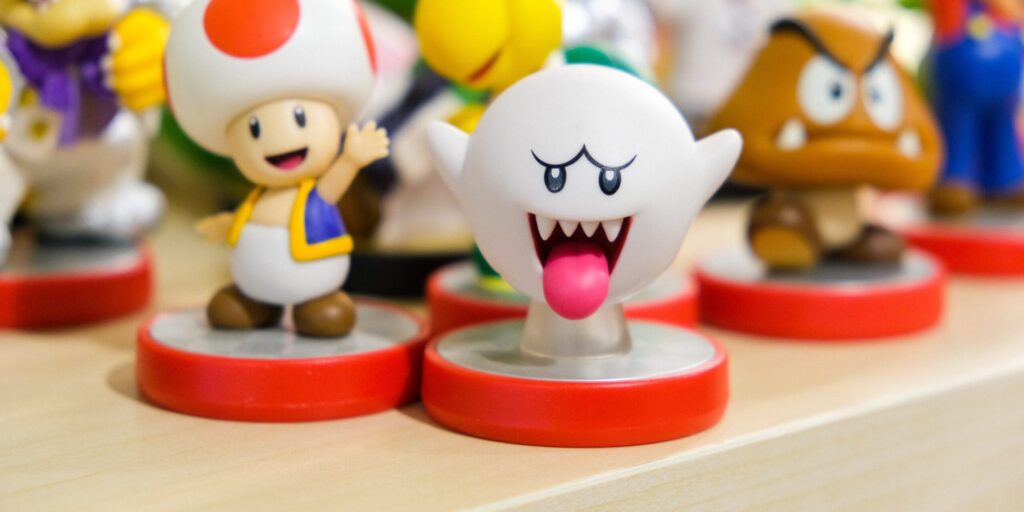Read time 4 minutes
This blog is another opportunity to feel grateful. Thank you, dear Universe, you continue to bless me with recovery and health.
While growing up, I enjoyed running around like any other kid for no rhyme or reason. It was one of those evenings when I fell and broke my leg and was advised bed rest for weeks together. It felt so incomplete seeing my colony friends play outdoor fun games.
It was in those days when my father introduced me to a Video game. It was an interactive digital entertainment device and a classic game, Donkey Kong. The idea was to search for a secret ingredient as I was too jittery and demanding. Something that could help make changes in my health behaviour and add an element of fun. Soon it became my new way of mingling with friends and also helped kill the epidemic of loneliness.

Generally, it’s a preformed notion that video games are quite harmful in a lot many ways. Yet, I happened to relive my childhood memories post getting diagnosed with a rare and a couple of chronic diseases.
I was diagnosed with a rare disorder called Isaacs’ Syndrome. Isaacs’ is a neuromuscular health condition that stems from muscle hyperactivity. My lift post-diagnosis underwent a drastic change. In the process, I also discovered that I had Lyme disease. Lyme is a bacterial illness that gets transmitted through ticks. I was also accompanied by Glaucoma. Glaucoma is an eye-related disease that damages the optic nerves. And Membranous Glomerulonephritis is a progressive kidney disease.
Age isn’t a barrier when it comes to having fun.
Playing a video came is all about fun. I used this controlled form of freedom for positive distraction. I took it as a part of my holistic therapy. I took it as a part of my treatment regime but by taking proper breaks, least physical strain. And also adhered to time boundaries.
The unconscious use of Visual Gaming as my treatment
Over the years things have evolved and so has the way we play games. Console gaming has been subdivided into action, simulation, strategy, sports, etc.
It has successfully touched all genres including health, education to entertainment. The controls are so simple and sophisticated that the characters cruise and respond with a click of a button.
It was important to choose a gaming experience that could appeal, be appropriate for my age and ears, and relevant to my health challenges. I also kept the length of the game, its light-heartedness, and the engagement quotient in mind.
I started playing Sudoku, a number placement puzzle game that relies on memory. It was my interesting past-time while going to the office.
After a couple of days, I gradually switched to an active mode of video games. It stressed the need for an effective intervention to improve physical activity yet had a subtle approach. It was also an opportunity to enjoy something that I gravitate toward doing as a hobby, playing table tennis.
Eleven Table Tennis is a great gaming option. It had plenty of ways to tailor-make according to my physical necessity. The beautiful graphics, filled with unpredictable moments made the experience extremely interesting.
In no time I felt my steps in the right direction. My body started to agree with this special set of exercises and gave positive signs. I kind of regained my range of movements that were lost during these years.
The gaming experience kept me on my toes and were equally challenging however became even more absorbing with every passing level of complexity. I was surprised to discover how it exactly understood and catered to my health changes:
- It was therapeutic in nature. My health showed signs of efficacy by enhancing my motor skills. The therapy reduced my stress levels and kept me happily distracted and engaged.
-
The Physio effect: my frozen shoulder got a breakthrough to a lot of extent. The virtual reality integrated objective methods. The daily hand movements helped shoulder rehabilitation.
-
Rekindled positive emotions: it helped me deal with my emotional stature in many ways. The experience demonstrated its playful personality which increased emotional awareness.
-
The Social Connection:
It acted as a bridge to get introduced to a set of happy and motivated people. The supportive group environment was encouraging and pushed me harder for betterment.
-
A great Pain Managing tool:
I was so involved in that allocated time slot that nothing else mattered, not even pain. It increased my pain tolerance level.
I realized that so much pain was perceived. The games acted as a positive distraction and the focus shifted from my discomfort.
-
Having a dopamine experience:
In this context, more happy hormones meant less stress. Dopamine is released in the brain’s striatum. It happens due to sensory pleasures and addiction.
-
It piqued my interest in other interesting subjects.
-
I noticed a considerable change in my food habits. During the playing hours, my mind completely went off thinking about food.
-
In the process of playing video games, I realized becoming more persistent. I slowly built the attitude of not giving up easily.
There is so much more to gaming than simple distraction. In my experience, games are irreplaceable. I felt happier in the company of games than in reading or any other recreational activity. The virtual world immersed my senses in a way that none other.
At times, it becomes hard for inactive people to take that first step. Re-living those pre-teen moments and feeling like a child once in a while is not too hard.
I included games as a part of my daily routine for 30-45 minutes. I presume them to be a tool that improvs my physical and mental abilities.
With the health benefits video games offer, it’s not a stretch to make an effort to be a little more playful.
DISCLAIMER
The views expressed above in this article are the author’s own and do not represent any kind of medical advice.


